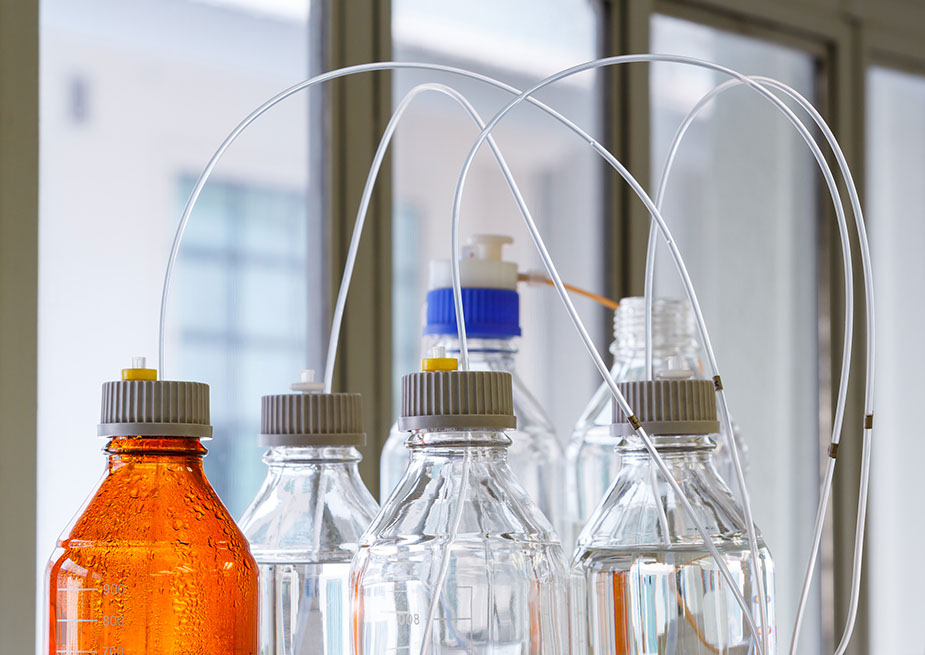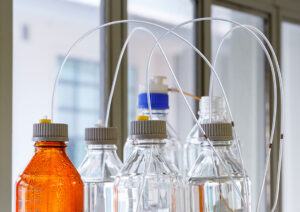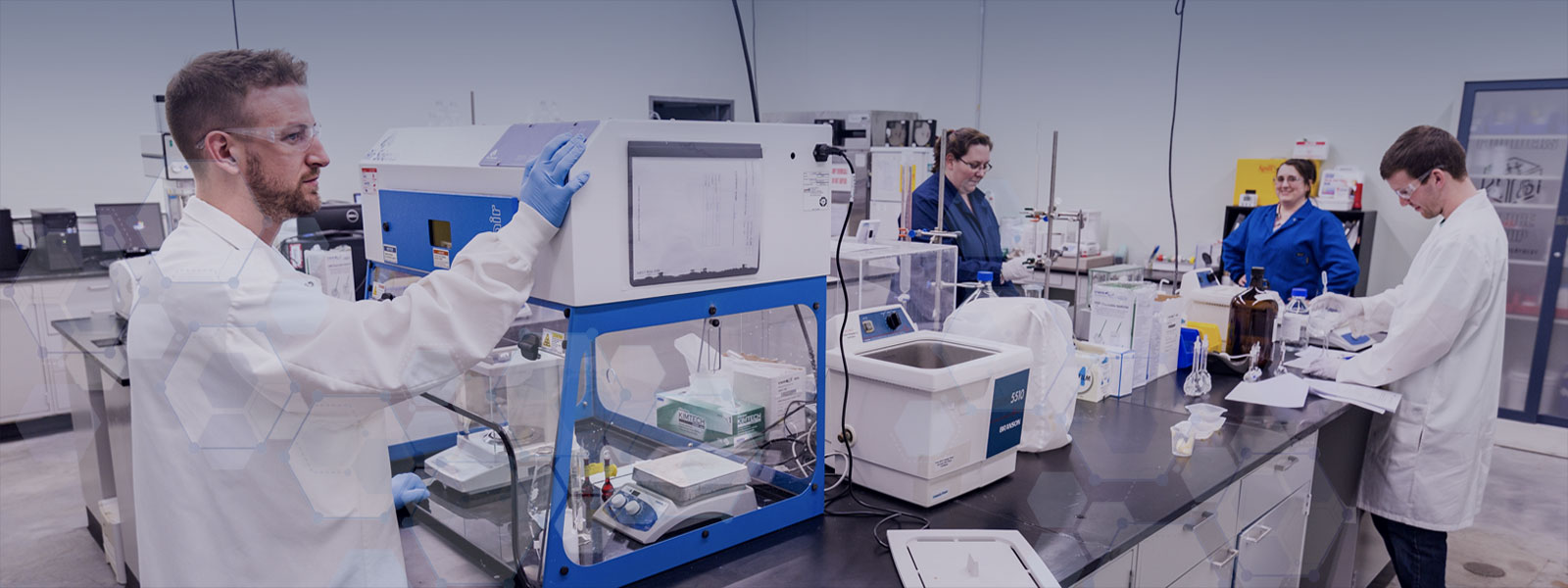We’re taking a slightly different approach with today’s blog post! We received some requests from our non-scientist friends working in science-related companies, asking for a clear explanation of HPLC and how it works. So, we’re putting on our teacher hats and breaking it down in a way that’s easy to understand for everyone!
High-performance liquid chromatography (HPLC) is a powerful analytical testing technique used to separate, identify, and quantify components in a mixture. It is widely used in industries such as pharmaceuticals, environmental testing, food and beverage, and biotechnology. Let’s dive deeper and break down the principles of HPLC chromatography, how it works, and its applications.
—
What is HPLC Chromatography?
HPLC chromatography is a type of column chromatography that uses high pressure to force a liquid solvent (mobile phase) through a column packed with solid particles (stationary phase). The interaction between the sample components and the stationary phase allows for the separation of complex mixtures into individual compounds.
—
Key Components of an HPLC System
An HPLC system consists of several critical components that work together to achieve precise and accurate results. Here’s a breakdown of the main parts:
1. Pump: Delivers the mobile phase at a constant flow rate, ensuring consistent pressure throughout the system.
2. Injector: Introduces the sample into the mobile phase stream.
3. Column: Contains the stationary phase, where the separation of compounds occurs.
4. Detector: Measures the separated components as they elute from the column.
5. Data System: Records and analyzes the data from the detector, providing detailed chromatograms.
—
How Does HPLC Chromatography Work?
The process of HPLC chromatography involves several steps, each crucial for achieving accurate separation and analysis. Here’s how it works:
1. Sample Preparation: The sample is prepared by dissolving it in a suitable solvent and filtering it to remove any particulates.
2. Injection: The prepared sample is injected into the mobile phase stream using an injector.
3. Separation: The sample travels through the column, where the stationary phase interacts with the components, causing them to separate based on their chemical properties.
4. Detection: As the separated components exit the column, they pass through a detector, which measures their concentration and generates a signal.
5. Data Analysis: The detector’s signal is recorded and analyzed by a data system, producing a chromatogram that displays the separated components.
—
Types of HPLC Testing Services
HPLC can be categorized into different types based on the separation mechanism and the nature of the stationary and mobile phases. Here are the most common types:
1. Normal Phase HPLC: Uses a polar stationary phase and a non-polar mobile phase, ideal for separating polar compounds.
2. Reverse Phase HPLC: Employs a non-polar stationary phase and a polar mobile phase, commonly used for separating non-polar and moderately polar compounds.
3. Ion Exchange HPLC: Separates ions and polar molecules based on their charge using an ion-exchange stationary phase.
4. Size Exclusion HPLC: Separates molecules based on their size, with larger molecules eluting faster than smaller ones.
—
Applications of HPLC Chromatography
HPLC chromatography is a powerful and versatile technique used to separate, identify, and quantify components in a mixture. It’s like a super-sleuth for scientists, helping them analyze everything from pharmaceuticals and food to environmental samples and biomolecules.
Here are just a few of the ways HPLC is used across different industries:
- Pharmaceuticals: HPLC plays a crucial role in drug development, ensuring quality control, and assessing the stability of medications over time. This helps ensure that medicines are safe and effective for patients.
- Environmental Testing: Concerned about pollution? HPLC can detect and measure pollutants in water, air, and soil, providing valuable data for environmental monitoring and protection.
- Food and Beverage: From ensuring food safety to analyzing nutritional content, HPLC helps maintain the quality and integrity of our food supply. It can even be used to identify contaminants or adulterants in food and beverages.
- Biotechnology: HPLC is essential for separating and purifying proteins, peptides, and other biomolecules, which are crucial for developing new medicines and therapies.
And if you’re looking for expert assistance with your analysis, we offer HPLC testing services to meet your specific needs. These services can provide valuable insights and support for research, development, and quality control across various industries.
—
Advantages of HPLC Chromatography
HPLC chromatography offers several advantages that make it a preferred choice for analytical testing. Here are some of its key benefits:
1. High Sensitivity: Capable of detecting and quantifying trace amounts of compounds.
2. Precision and Accuracy: Provides reliable and reproducible results.
3. Versatility: Can be used for a wide range of compounds and applications.
4. Speed: Delivers fast and efficient separations compared to traditional chromatography methods.
—
Wrapping Up HPLC Testing Services
HPLC chromatography is a sophisticated and highly effective analytical technique that plays a crucial role in various industries. Its ability to separate, identify, and quantify complex mixtures with precision and accuracy makes it an indispensable tool for scientific research and quality control.
If you’re looking for reliable HPLC testing services, Founders Science Group is here to help. Our team of experts is equipped with state-of-the-art technology to deliver accurate and timely results for your analytical needs. Contact us today to learn more about our services.



